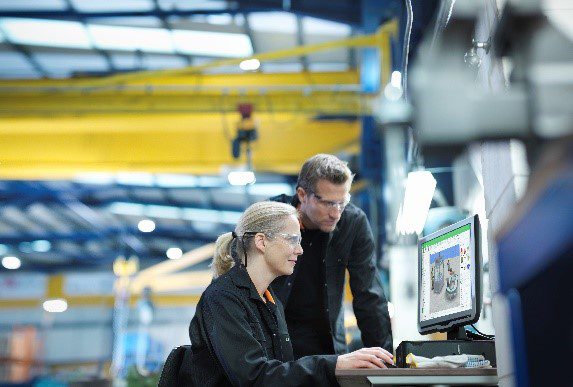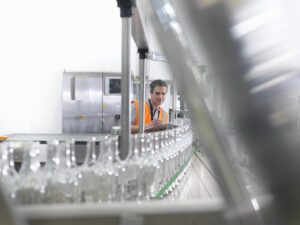
Industrial OEMs and end customers face unprecedented challenges today. Consumers expect a high degree of customization in the products they buy, industrial companies face a skill shortage, and today’s workers have different needs and expectations. There are supply chain challenges, the global crisis of components shortages, and the ever-present pressure for results from the financial community. How can production machinery suppliers and the industrial enterprises they serve reach the agility, profitability, and productivity levels to compete today?
Let’s take a look at three typical project phases to understand how digitization and today’s smart design and engineering tools could offer answers:
Sales, design, and proof of concept: that results in saving 20-50% in time to market and 10-20% on quality costs
- Digital design techniques allow machine capabilities to be clearly demonstrated to prospective clients before they purchase. Cost-effective, accurate and convincing demonstrations of machine builder capabilities help improve sales effectiveness and eliminate performance surprises later.
- Machine and their associated material handling systems can be designed and demonstrated virtually. Operation and throughput can be understood with near 100% accuracy, and this helps eliminate design errors and costs. All this can be done before physical machine build even takes place.
- A continuous digital thread that runs from sales to proof of concept ensures customer needs are fully understood and accurately reflected in final designs.
Production machine build and commissioning: which result in a saving of 60% commissioning time
- Fast, effective, error-proof configuration/build of machine and associated material handling systems thanks to modular, virtually verified designs with Lexium™ MC12 multi carrier.
- Virtual commissioning Allows Factory and Site acceptance test runs to be prepared upfront, reducing the time and effort required. It also reduces design errors and costly on-site, real-world debug time.
- Client production volume and quality requirements are met in less time, reducing end-user time to profit, and helping machine builders meet this key project milestone in less time (get paid faster).
Operations phase at the end-user facility: that increases your sales and profit from new business opportunities
- Digital Twin can be used to identify real-world process improvement actions and abnormal operations before downtime occurs. Additionally, operators can be trained in safe, offline environments.
- Machine builders can offer remote expert digital services during the operation phase to ID improvement opportunities and provide troubleshooting. This improves OEE and reduces unplanned downtime.
- Application software upgrades can be tested and verified offline to ensure they yield optimal real-world performance benefits.
- Machine suppliers can maintain trusted advisor relationships with their end customers during the far longer (10+ years) operating phase of the industrial operation lifecycle.
Today, digital machine design approaches allow many of the complex aspects of production machinery to be visualized, simulated and “built” in the virtual world rather than resorting to building, testing and verification and then redesigning and re-building in the real world. The result is more effective, efficient and profitable design, build, commissioning and operation of production machinery.
This approach generates a digital thread that runs through all phases of a machine’s lifecycle. The virtual model is always available to improve maintenance, training and continuous improvement activities.
New smart service solutions and digital service opportunities allow machine builders to remain engaged with their end customers during the processes operation phase (10+ years). OEMs can leverage their superior knowledge to provide new levels of diagnostic and improvement advice to their end customers and do it all remotely, saving travel time and cost.
OEMs can create and scale services to help end-users be successful in smarter and more proactive ways.
Some examples include:
- Remote Monitoring
- Outcome-Based Services
- Consumables as a Service
- Equipment as a Service
All these smart service solutions allow machine builders to become true digital collaborators with their customers and play an integral role in their operations to help them improve productivity and meet their business goals.
Ahead of the Curve
Smart Service Solutions can help realize the promise of digital transformation — both for end-users and OEMs. Delivering smart machines and equipment with scalable services can help OEMs create new revenue streams, grow customer relationships, help customers prosper, and help keep industrial companies and their production machinery suppliers competitive.
To learn how you can take advantage of today’s digital tools, including the EcoStruxure Machine Expert Twin scalable suite, get a closer look and give it a try yourself with this interactive demonstration. Smart Service Solutions reduce time to market, reduce quality costs, save commissioning time, and take advantage of new business opportunities,
Watch our webinar to learn more about how Schneider Electric’s Machine Expert Twin addresses modern machine design requirements with Lexium™ MC12 multi carrier.
Join us at Hannover Messe this year to learn more! Secure your free pass NOW
Learn more:
How digital transformation impacts an OEMs post-sales business – Brochure
EcoStruxure Machine Expert – User Guide
Machine builder opportunities and challenges in the new digital world – eGuide



